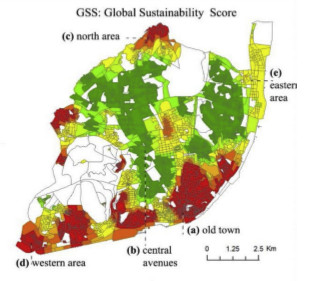Supporting urban planning policies - Lisbon case study 15/03/2019
 Joana Pedro and Carlos Silva from IN+, together with Manuel Duarte Pinheiro from the Department of Civil Engineering, Architecture and Georesources, published an article proposing a bridge between the urban sustainability assessment and the spatial analysis, in order to better identify priority areas for intervention for sustainable urban development.
Joana Pedro and Carlos Silva from IN+, together with Manuel Duarte Pinheiro from the Department of Civil Engineering, Architecture and Georesources, published an article proposing a bridge between the urban sustainability assessment and the spatial analysis, in order to better identify priority areas for intervention for sustainable urban development.
Local governments face increasing pressure to define land-use policies to enhance local sustainable development. This requires the development of urban planning tools that can help them in selecting measures and priority intervention areas within their cities.
The tools currently available only address this problem partially. Geographical Information Systems (GIS) have been widely used in urban planning for handling spatial data but have limited capacities for representing choice and priority among the conflicting objectives for sustainable urban planning. Meanwhile, urban sustainability assessment systems, such as BREEAM-Communities (BREEAM-CM), can help to choose the most sustainable measures under such conflicting objectives, although they are typically non-spatial by assuming a spatial homogeneity within the study area, therefore, they cannot be used to identify priority intervention locations.
This paper proposes bridging the gap between urban sustainability assessment and spatial analysis by combining GIS and BREEAM-CM. Instead of the traditional use of BREEAM-CM to assess a single neighbourhood, we applied this system to all Lisbon city subsections with the support from GIS. It resulted in the identification of priority intervention areas for sustainable development within the city including: attracting new businesses to the north area; implementing energy efficiency strategies and new green areas in the old town and central avenues; and improving public transport links in the north and western areas. These findings show that the proposed model can be a valuable tool for evaluating and defining local sustainable development strategies.



